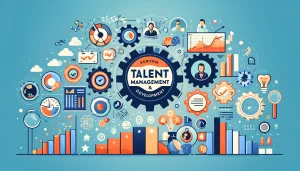A Customer Relationship Management (CRM) system is a software solution designed to help businesses manage interactions with current and potential customers. Here are the key components and functionalities typically found in a CRM system:
Contact Management:
Store and manage customer contact details, including names, addresses, phone numbers, email addresses, and social media profiles.
Maintain a centralized database of customer information accessible to sales, marketing, and customer service teams.
Lead Management:
Capture, track, and nurture leads through various stages of the sales funnel.
Assign scores or ratings to leads based on their level of interest, engagement, and readiness to purchase.
Convert qualified leads into opportunities and assign them to sales representatives for follow-up.
Opportunity Management:
Manage sales opportunities and deals through the sales pipeline.
Track the progress of opportunities, stages, and sales activities.
Forecast revenue and predict the likelihood of closing deals.
Sales Pipeline Management:
Visualize and manage the sales pipeline to track the status of deals and prioritize sales activities.
Customize sales stages, milestones, and criteria for moving deals through the pipeline.
Identify bottlenecks, stalled deals, or opportunities requiring additional attention.
Activity Tracking and Task Management:
Schedule and track sales activities, tasks, appointments, and follow-up actions.
Assign tasks to sales reps, set deadlines, and monitor task completion status.
Automate reminders and notifications for upcoming tasks and deadlines.
Email Integration:
Integrate with email platforms to track email interactions with customers and prospects.
Sync emails, attachments, and conversations with CRM records for better visibility and context.
Automate email campaigns, follow-up messages, and personalized communications.
Document Management:
Store and organize documents, contracts, proposals, and other sales collateral related to customer interactions.
Associate documents with specific contacts, accounts, or opportunities for easy access and reference.
Share documents securely with team members and collaborate on document revisions.
Reporting and Analytics:
Generate reports and dashboards on sales performance, pipeline metrics, revenue forecasts, and customer trends.
Monitor key performance indicators (KPIs) such as sales quotas, conversion rates, average deal size, and sales cycle length.
Analyze data to identify patterns, opportunities, and areas for improvement in sales processes and strategies.
Integration and Automation:
Integrate with other business systems and applications, such as marketing automation platforms, ERP systems, accounting software, and customer support systems.
Automate routine tasks, workflows, and notifications to streamline sales processes and improve productivity.
Enable seamless data synchronization and communication between CRM and other departments.
Mobile Accessibility:
Provide mobile applications or responsive web interfaces for sales reps to access CRM data, manage leads, and update records on-the-go.
Enable sales reps to view customer information, track activities, and update opportunities from mobile devices.
Enhance productivity and responsiveness by enabling mobile access to CRM functionalities.





